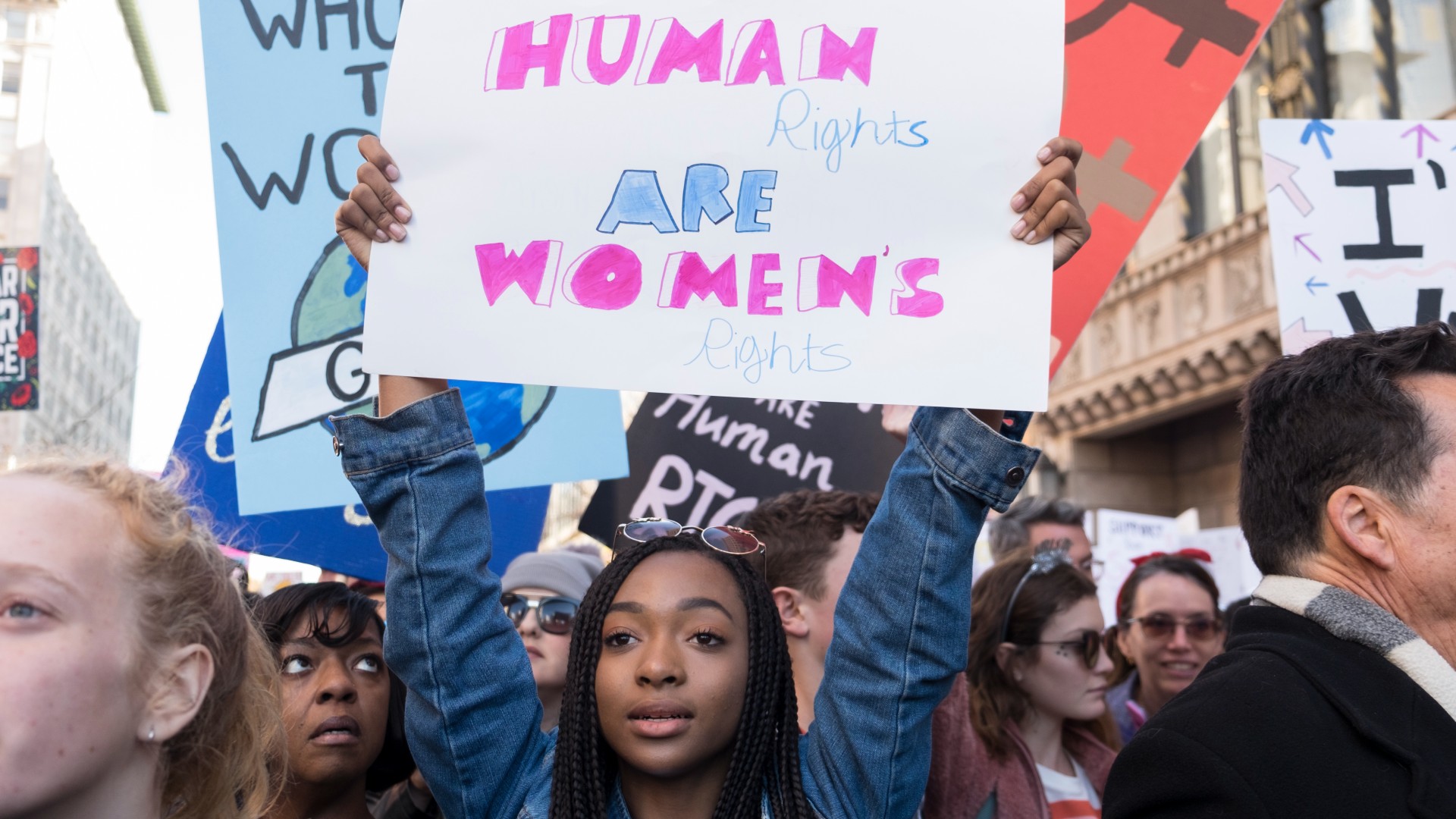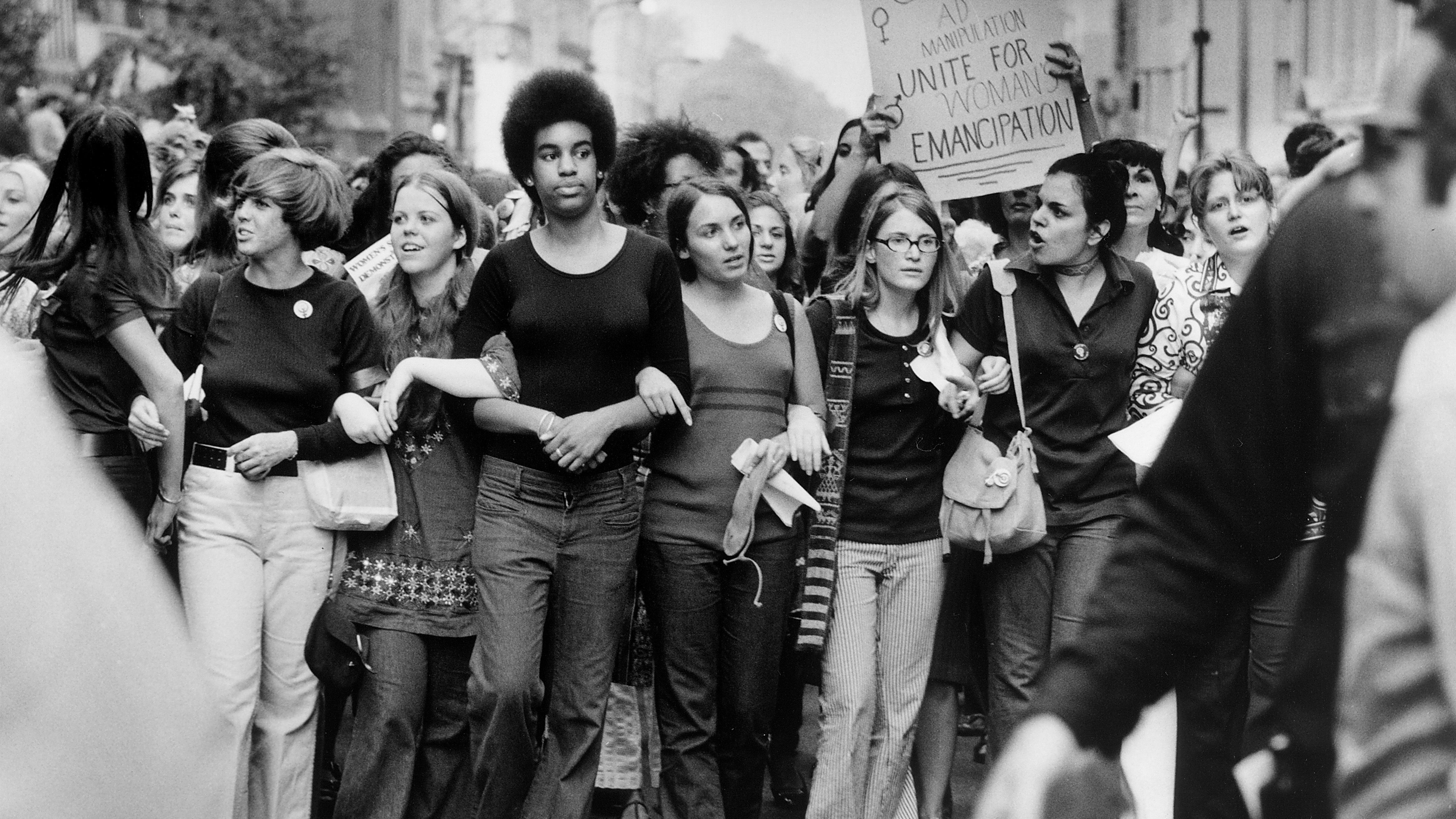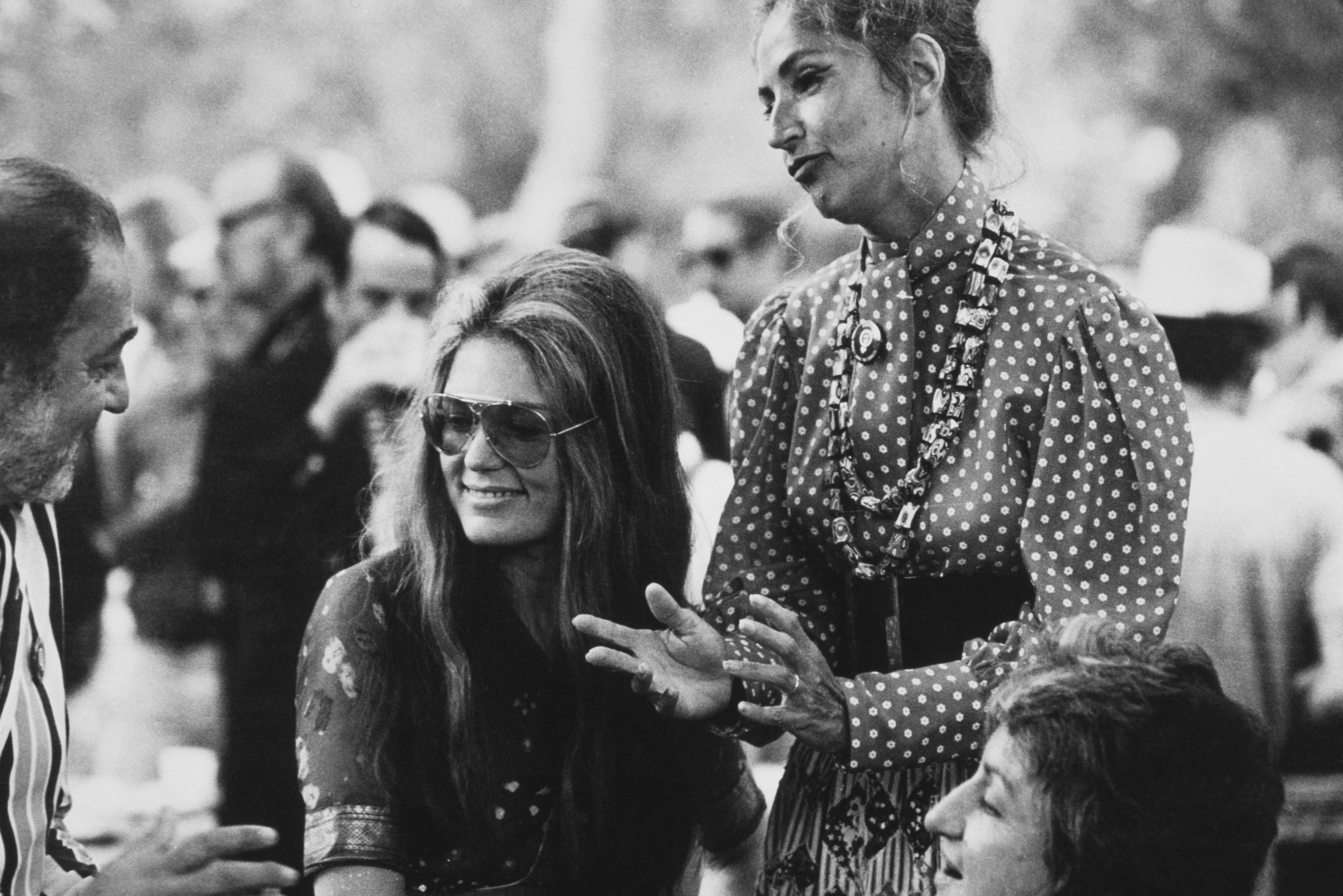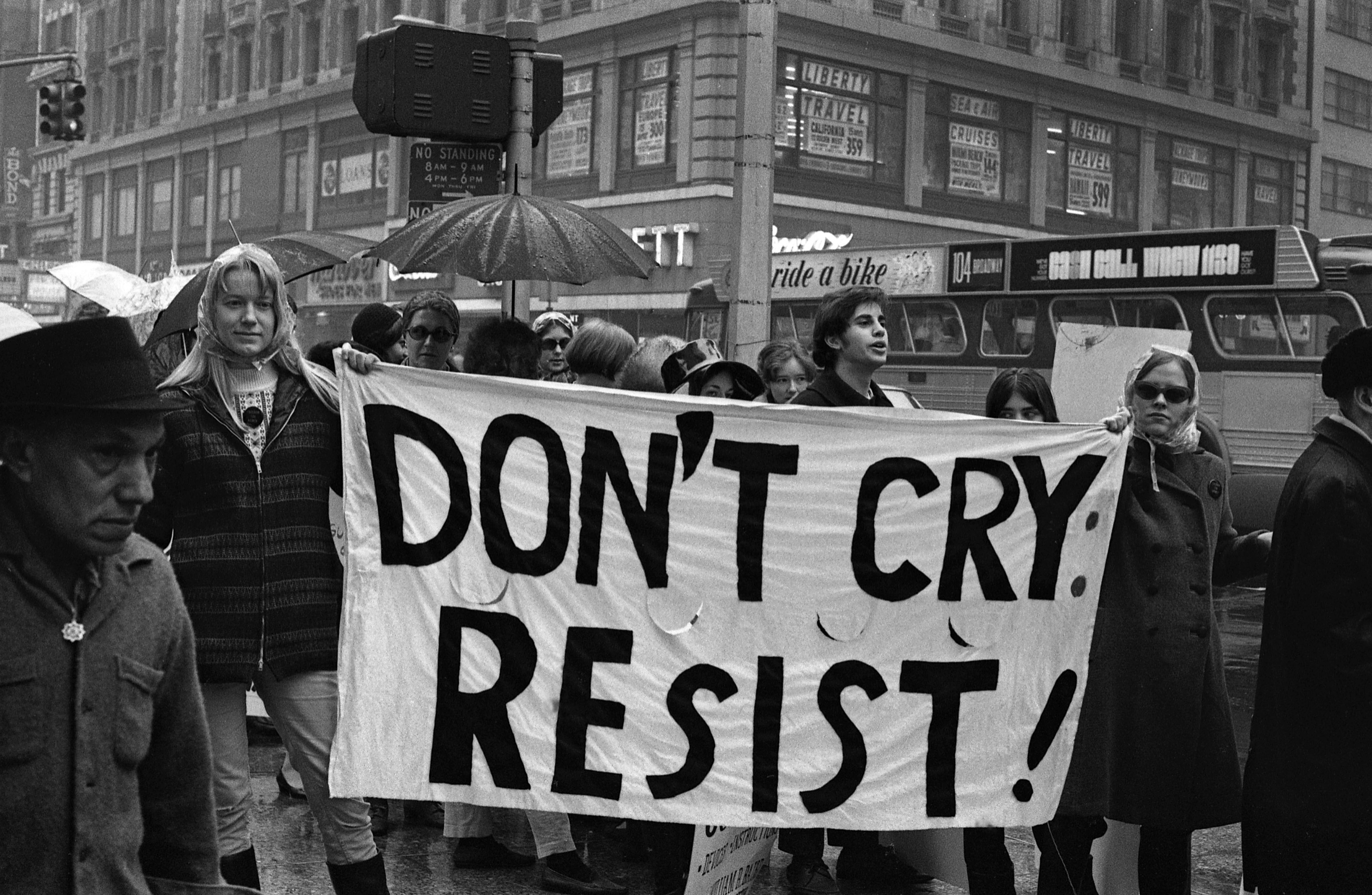36 Ways Women Still Aren't Equal to Men
If anyone tries to tell you otherwise, show them these statistics.

More than a century since women were given the right to vote, the sad fact of the matter is: We've still got a lot of work to do. Somehow, "feminism" remains a controversial word, even though the definition of feminism is impossible to argue with: an effort to make sure every woman and every individual has rights equal to that of a cis white man, no matter their race, religion, gender identification, sexual preference, or anything else.
Sounds like a common-sense cause, right? Well, in spite of a plethora of data proving that women are not treated equally to men in America, many people disagree with the premise of feminism, arguing that women already are equal to men, or that their gains haven't matched men's because they haven't worked hard enough, or that women and men are inherently and biologically different and cannot be compared. Others agree that women's rights are a noble cause, but that men's rights aren't given the same consideration.
In actuality, most feminists consider men also at a disadvantage due to the inequality between men and women. When we socialize men to not show sadness and fear, to provide financially and not emotionally, and not to seek mental health help, to name a few examples, we contribute to a culture that harms both men and women. At the same time, men, particularly cis white men, are statistically at an advantage when it comes to earning power, career progression, and a multitude of other factors. Feminism is the hard work that both men and women have to do to level the playing field—even more so now that the COVID-19 pandemic has exacerbated existing inequalities between men and women, and for women of color especially.
Here, just some of the shocking ways women aren't equal to men, both inside and outside of the United States.
1. Women pay more for common household items than men do.
Shampoo, deodorant—even a 10-pack of socks—are among the many products that cost more for women, according to a 2015 analysis by Marie Claire.
2. The "pink tax" isn't just for personal care items.
Although things like razors and shampoo are the most egregiously upcharged items, the so-called pink tax means that all kinds of items geared at women cost more: Toys and accessories for girls are found to be 7 percent higher. Women pay more for clothes and protective gear like helmets (not to mention bigger-ticket items like mortgages). They even pay more for senior home healthcare products, meaning they pay more for common items from the beginning to the end of their lives.
In October 2020, New York banned the pink tax, and 20 states so far have gotten rid of the tampon tax (i.e., taxes on period products), so hopefully other states will follow suit. As of now, H.R. 3853, the Pink Tax Repeal Act, is still making its way through Congress.
Get exclusive access to fashion and beauty trends, hot-off-the-press celebrity news, and more.
3. Women make less money than their male counterparts.
Although the pay gap is slowly, but surely narrowing, the progress made in the last two decades has nearly stalled. According to the Pew Research Center, American women working full- and part-time in 2022 make 82 cents for every dollar earned by men. To put that number in perspective, women made 80 cents to the dollar in 2002 and 65 cents to each dollar in 1982.
It's an even grimmer picture overseas: Women worldwide make an average of 20 percent less than the amount paid to men, according to a release from the United Nation's International Labor Organization.

4. For Black, Latina, and women of color, the pay gap is even worse.
Black women have to work 21.5 months to make what white men did in a year, according to the Institute for Women's Policy Research (the current numbers place them as earning $0.63 for every dollar earned by a white, non-Hispanic man). When comparing all women workers regardless of how many hours they worked, that number is even steeper, especially for other women of color. Post Covid-19, Latina women make $0.49 for every dollar, Asian American and Pacific Islander women $0.75 cents for every dollar, and indigenous women $0.50 to every dollar, per research from the National Women's Law Center.
5. Workplace sexual harassment is so common that it directly contributes to the wage gap.
Workplace sexual harassment and assault is so common that it's driving women, en masse, to resign from their jobs. Reporting such abuse is often unattractive for women due to retaliation and lack of consequences for abusers. Thus, victims feel that in order to prioritize their safety, they must face unemployment, job insecurity, and pay cuts―not to mention the financial sacrifices they make by giving up equity and the potential for upward mobility once they leave their companies.
And what happens to the women who stay in these toxic work environments? Women who stay in jobs where they're being sexually harassed report decreased productivity, greater rates of anxiety and depression, and feelings of disempowerment with regards to negotiating promotions and raises.
6. Corporate hiring processes put women at a systemic disadvantage.
Workplace sexual harassment and the wage gap would be a lot less prevalent if there were more women in management roles, right? So, why not hire more women?
According to Oregon State University's Journal of Management, implicit bias often results in women's resumés being passed over in favor of men's during consideration for executive positions. Interestingly, this bias means that companies frequently hire less qualified candidates (just because they're male, it seems), and suffer significant financial losses as a result.
Even when companies hire internally or within their professional networks, implicit bias makes its way into the process. The Harvard Business Review reports that when companies tap into their inner circles to hire for open roles, it's typically a matter of males contacting their fellow male friends. And because male-dominated fields contain so few women, men solely (often subconsciously) envision other men in open roles. So, when it comes time for people to make shortlists of candidates to consider, those lists are too often bereft of women.
7. Women are underrepresented in government.
Although women make up nearly 51 percent of the U.S. population, only 28 percent of Congress is comprised of women, which—fortunately or unfortunately—makes the current Congress the most diverse in American history.
Meanwhile, the number of women in government worldwide is improving, although we're still ways off from equal representation. For the first time ever, there are women MPs in every single country on Earth, according to the Inter-Parliamentary Union. However, the bad news is that it will take another 80 years to reach gender parity in parliament.
8. Women are the minority in the executive suite.
At Fortune 500 companies, women currently account for just 10 percent of CEOs, according to Fortune. Meanwhile, just 8.2 percent of CEOs at Standard & Poor 500 companies are women. Studies also found that women CEOs of Fortune 500 companies have significantly shorter tenures than male CEOs; women at the top tend to stay in their positions for about 44 months on average compared to the 60 months that men do.
There are, however, some positive changes happening: The number of women who sit on Standard & Poor 500 board is up 7 percent from 2020; CNBC reported that S&P companies appointed 413 new independent directors in December 2020, with 59 percent of these appointments going to women and minority men, marking 2020 as the first ever year where every S&P company has at least one woman on its board. Never mind the fact that, per Bloomberg, no women cracked the list of the top five highest-paid CEOs in the stock market index.
9. Women are also the minority in the news media.
The Women's Media Center's 2021 edition of The Status of Women in the U.S. Media reported that though women comprise 41 percent of the overall news media workforce, they aren't being compensated appropriately; gendered pay disparities are still observable in newsrooms of major outlets like the Associated Press, The Washington Post, and The Wall Street Journal, with men earning substantially more than women.
10. Women are the minority in the tech sector, too.
In 2022, the percentage of women in tech jobs sits firmly at just 25 percent, according to a report from Deloitte. While that is an 11.7 percent increase from 2019, women still have far to go when it comes to making waves in the tech industry.
It can be attributed, in part, to the simultaneously declining number of female college students planning on entering the tech sector; of the women enrolled in universities across the country, just 20 percent were studying engineering, and only 18 percent were computer science minors. That number has since only increased to about 27.3 percent.
The turnover rate of female employees in tech is also disturbingly high. Women are more than twice as likely to leave their jobs in tech than men, with many citing the lack of advancement opportunities and pay gap as reasons to leave. By age 35, 50 percent of women in tech leave their jobs, which is a rate 45 percent higher than men.
11. When women enter male-dominated industries, the pay decreases.
As women make the cross over into workspaces mostly occupied by men, often in search of higher salaries with more benefits, the opposite actually happens—the average pay for the industry tends to drop significantly over time, confirms The New York Times.
12. Female entrepreneurs receive less funding and investments.
Getting funding for a startup is hard enough, but sexism and gender inequality often complicate starting one's own business even further. According to findings from All Raise, a nonprofit organization dedicated to the success of female entrepreneurs, only 14 percent of decision-makers at venture capitalists are women. Of the existing VC firms, 63 percent don't have a single female partner.
Women interested in running their own startup usually meet difficulties when it comes to securing the capital, and All Raise predicts that the number of female VCs will continue to plateau and possibly even decrease over time if nothing is done to change the current industry.
13. Fundraising from female venture capitalists can hurt business
We already know it's tough to obtain funding if you're a female business founder, but when they actually do obtain funding and it happens to come from another woman, their business could hurt in the long run. According to the Harvard Business Review, support from female investors can make it harder for female founders to raise additional funding. In a study of more than 2,000 venture-baked startups, women-led firms which raised funds exclusively from female venture capitalists were found to be two times less likely to raise a second round.
This can be chalked up to attribution bias, a tendency in which people explain a person's actions by their character or personality. In this case, when people see a female entrepreneur receiving funding from a male investor, they think it's because her business is strong. However, if that same founder were to only receive funds from a female investor, people may assume her success is due to her gender, making it more difficult for that founder to raise funds in the future.
14. Women still shoulder more of the household burden.
Despite the fact that women are more educated and more employed than ever before, they're still tasked with the majority of household duties. Forbes reported that 54 percent of women take maternity leave, while just 42 percent of men take time away from their jobs. Additionally, women are taking 10 times as much temporary leave to be with their newborns than men do, often saddling them with additional financial burdens. Women are also more likely to work from home, look after sick kids, or even quit their jobs completely to be caretakers.

15. Only 10 countries offer women full legal protections.
Speaking of protections around motherhood, according to a 2022 World Bank study, the U.S.'s lack of laws around parental leave, equal pay, and equal pensions meant it didn't even crack the top 30 countries that offer women full legal equality with men. In fact, only 12 countries scored a perfect 100 percent in terms of legislation ensuring equality: Belgium, France, Denmark, Latvia, Luxembourg, Sweden, Canada, Iceland, Portugal, Greece, Spain, and Ireland. The U.S. scored a 91.3 percent, right alongside Taiwan and Albania.
16. Women are more likely to be injured in car crashes.
And the reason why is depressing and infuriating. A 2011 New York Times article found that women were 47 percent more likely to be injured in car crashes because the safety features were—you guessed it—designed for men. In 2021, a new study by the Insurance Institute for Highway Safety (IIHS) found that women are still much more likely to be injured, despite men driving more and exhibiting more reckless behavior behind the wheel. Women are 37 to 73 percent more likely to get seriously injured in a crash and 20 to 28 percent more likely to be killed. The underlying cause here was behavior: Men tended to drive larger cars and be the car that struck another vehicle. Another not-so-fun fact? Women pay more for cars, despite this.
17. Women do most of the caregiving.
Caregivers, who often go unpaid, help our loved ones live their day-to-day lives. As it turns out, that stressful job is more often held by women. According to the Family Caregiver Alliance, upwards of 75 percent of all caregivers are female and may spend as much as 50 percent more time giving care than males. The study also found that 36 percent of female caregivers shoulder most of the burden of difficult tasks such as bathing and toileting, compared to 24 percent of male caregivers.
18. Women are far more likely to be the victims of human trafficking.
According to data from an annual report conducted by the United Nations Office of Drugs and Crime (UNODC), the study found the number of girls forced into trafficking has risen exponentially, most frequently for sexual exploitation. Girls aged between 14 and 17 years old particularly are targeted, which follows the broader pattern of gender and sexual-based violence that also targets teen girls.
Sexual exploitation remains the most common form of human trafficking; forced labor isn't far behind.
19. Many female soldiers face harassment and sexual assault.
In a 2019 Smithsonian study conducted in conjunction with American military newspaper Stars and Stripes, 66 percent of female service members reported experiencing sexual harassment or sexual assault—and that number is way up from the 27 percent that the Defense Department reported in 2015.
Unfortunately, those numbers haven't gotten any better. Reports of sexual assault in the military have increased from 2020 to 2021 by 13 percent, per CNN. In January 2022, however, President Biden signed an executive order to make sexual harassment an offense under the Uniform Code of Military Justice.
20. Women overall are at a greater risk of rape and domestic violence.
The National Domestic Violence Hotline reports that females ages 18 to 24 and 25 to 34 generally experienced the highest rates of intimate partner violence (IPV). Eighty-one percent of these women (who may have experienced rape, stalking, or physical violence by an intimate partner) reported significant short- or long-term impacts such as post-traumatic stress disorder symptoms and injury.
21. Women are stuck with more household chores than men.
As much as we would like to think we have made strides in equality, women are still stuck in the stereotypical role of the domestic housewife. A study published in the journal Work, Employment, and Society found that women spend around 16 hours every week doing household chores, whereas men do around six. Even when both the man and woman in the studied couples have full-time jobs, the women were found to be five times more likely than men to spend at least 20 hours a week doing chores.
22. Retired women are twice as likely as retired men to live in poverty.
As women make less money but live longer, a clear issue presents itself: The longer a woman is on earth, the more money she needs to have in order to survive. Around three out of seven women who want to retire by age 67 will seriously struggle with saving, says CBNC. Survey results from Aon, a global risk, retirement, and health consulting company, show that most women have an average of about 7.6 times their salary saved by that age when they really need to save 11.6 times what they make annually.

23. Women of all ages are more likely than men to live below the poverty line.
Across the U.S., women are 35 percent more likely to be poor than men, according to a report from The Women's Legal Defense and Education Fund. That number worsens for single mothers and women of color. Worldwide, the majority of the more than 1 billion people living in poverty are women, according to the U.N. Furthermore, because climate change disproportionately impacts the world's poor, women are far more vulnerable to the food insecurity, instability, and homelessness brought about by the effects of climate change.
24. Women and girls face more chronic hunger.
It's estimated that 60 percent of chronically hungry people around the world are women and girls, and it can be a statistic that's a trickle-down effect of larger problems of gender inequality like lack of education, lack of job opportunities, and violence against women. According to WFP Gender Policy and Strategy, high food prices, climate change, and economic instability exacerbate existing inequities. It's not solely a global trend: Women disproportionately experience hunger in the United States when compared to men. In this country, 26.6 percent of families with a single mother live below the poverty line and are more likely to be food insecure at 31.6 percent (compared to 14.9 percent and 21.7 percent for single fathers, respectively).
25. Women spend more on health insurance and healthcare.
Because women have children and live longer, historically they've been considered higher "risks" from a health insurance perspective—meaning they've been charged more. Despite the Department of Health and Human Services (HHS) issuing a ruling prohibiting discrimination in health insurance and healthcare in 2013, women still pay more (and get less) from health insurance and their healthcare usage. Data from the Kaiser Family Foundation and Journal of the American Medical Association in 2019 showed that women paid $1,500 more on average on healthcare every year, and yet also skipped out on preventative treatments and other treatments due to cost.
26. Yet female pain and medical issues are not taken as seriously as they are for men.
Did you know that the word "hysteria" has its roots in the Greek term for "uterus"? Well, it seems that in spite of several centuries of gained wisdom about women's high pain threshold, there remains an outrageous societal tendency to underestimate women's pain. Harvard Medical School reports that, on average, women with abdominal pain can expect to wait at least 65 minutes in emergency rooms before being treated for abdominal pain, whereas men can expect to wait 49 minutes. In many cases, women may not be treated or seen by doctors at all, which can have fatal consequences: Women are 7 times more likely to be misdiagnosed and discharged from the hospital while they are having a heart attack, according to The New England Journal of Medicine. Male doctors have been known to blame severe physical pain on things like stress, relationship problems, or the dreaded phrase: "You're just emotional."
This phenomenon is even worse for women of color. Take, for instance, the case of Joyce Echaquan, an indigenous Canadian woman with a pre-existing heart condition who, upon visiting the hospital, was taunted with racial slurs, given strong sedatives, and then left unsupervised. She died in that hospital of an entirely preventable pulmonary edema.
27. Women experience medical side effects to a disproportionate degree because drugs are designed for male bodies.
According to the University of Chicago, women are often excluded from clinical trials for medications because the unfounded (and disproven since 2014) belief that females' hormonal cycles skew test results. Not only are women excluded from clinical trials during later stages of medical research, but labs go so far as to use male mice instead of female mice during early stages of development. Even our basic understandings of illness and symptoms of disease are based on male physiology.
As a result, women are often misdiagnosed and overmedicated, ending up with higher concentrations of medication in their blood than men with the same prescriptions. UC Berkeley found that in 90 percent of cases, women experienced side effects twice as often as men, including cognitive deficits, declines in mental health, nausea, headaches, hallucinations, and cardiac problems.
28. Women are far less represented in STEM.
According to the American Association of University Women (AAUW), women are discouraged from a young age from pursuing careers and academic interests in STEM (science, technology, engineering, and mathematics). Much of this is due to implicit biases that careers in the humanities are feminine while careers in STEM are more masculine. Currently, women make up only 28 percent of the STEM workforce. While this is far better than the 1970s, when women comprised only 8 percent of Americans in STEM, these female professionals still face substantial challenges like workplace sexism, lower pay, a lack of mentorship, and even sexual harassment and assault (take, for instance, the allegations against tech company Activision).
29. Women in Hollywood aren't given the same opportunities as men in the industry.
Behind the scenes, women working in Tinseltown make up only a small portion of the workforce; according a 2022 UCLA study, women make up less than 22 percent of directors in Hollywood and 33 percent of film writers. And if a woman is at the helm of a film, it's more than likely a film with a budget of $20 million is a white man were to direct, according to the study.
Those numbers appear to be just as dismal around the world as they are in Hollywood. In Europe, just 23 percent of directors are women and 27 percent are screenwriters, per Variety.
30. Women aren't paid anywhere near as much in Hollywood, either.
Back in 2018, the film All the Money in the World made headlines, but not for the reasons one would expect. It was revealed that Mark Wahlberg made $5 million to do necessary reshoots for the movie while his co-star Michelle Williams only received $625,000. Shocking, but not at all uncommon in Hollywood: Forbes reported that actresses earned only about 35 cents on the dollar compared to their male counterparts in the industry.
31. Men's stories are being told more than women's in film.
Women already have to compete with men in terms of pay in Hollywood, but they also have to compete for screen time. In 2018, Dr. Martha M. Lauzen and her team of researchers reviewed the 100 top-grossing films of the year to determine the differences between men and women on-screen. The study found that men are more often the protagonist in films than women by 52 percent. Additionally, the overall percentage of major female characters in film was just 36 percent, whereas men had 64 percent.

32. Women have far fewer speaking roles in film than men.
Another gut-punch to women in film—the complete lack of speaking roles. According to Dr. Lauzen's study, just 35 percent of female characters actually speak in film. In contrast, 65 percent of male film roles are speaking parts. So this means that not only are women's stories not being told, but their voices are literally not being heard either.
33. Despite being as successful as male athletes, women in sports still face gender inequality.
The United Nations Educational, Scientific and Cultural Organization (UNESCO) studied sports coverage and found that there were significant differences in the way that female athletes and their games were discussed in the sports media. Coverage of women in sports, says the organization, is often dominated by references to appearance, age, or family life—men are depicted as powerful, independent, dominating, and valued as athletes.
Besides gendered conversations by sports pundits, female athletes are still trying to fight against the wage gap that exists in the sports world. Most notably, the United States Women's Soccer team recently filed a lawsuit against the U.S. Soccer Federation (USSF) alleging gender discrimination. Despite winning more games and bringing in more revenue than the U.S. Men's team, Megan Rapinoe and her comrades on the USWNT earn less than half of what the men do. Part of the lawsuit was dismissed in 2020 and was only recently, upon appeal, settled.
34. And women's sports are vastly underfunded to begin with.
According to the Women's Sports Foundation, girls and young women have 2.1 million fewer opportunities than their male counterparts to participate in sports, and are more likely to quit sports at a young age due to lack of funding and rapidly decreasing quality in sports programs. As someone who played sports as a kid, I can attest to this: While the boys' soccer team in my high school was coached by a former Division 1 soccer coach, the girls' team was coached by our campus security guard, who openly admitted that he'd never played soccer before and often forgot the word "cleats."
In the United States, Title IX is supposed to be a robust measure ensuring that women's sports receive the same funding and attention as men's sports, but that's simply not the case. In reality, while women make up more than 50 percent of NCAA athletes, they receive only 28 percent of athletic money and 42 percent of athletic scholarships, while men's programs receive 2.5 times the amount of basic funding.
Why, you may ask, are sports so important for women? Women who play sports during and before college report higher rates of confidence and positive self-image, and are less likely to develop serious health conditions like breast cancer later in life.
35. Women are woefully undereducated about their own bodies and sexualities.
The sex education in this country is a disgrace. I, like many Americans, was taught abstinence-only sex education, meaning that there was no discussion about recreational sex or female pleasure, and contraceptives were talked about as unnatural, last-resort options that were inferior to total abstinence. Countless reputable sources, including Columbia University and the Journal of Adolescent Health, have condemned this sort of education, citing that these tactics "violate adolescent human rights, withhold medically accurate information, stigmatize or exclude many youth, reinforce harmful gender stereotypes, and undermine public health programs."
Not only does sex-shaming sex ed (or a lack of sex ed altogether) result in increased rates of teen pregnancy, STD infection rates, and sexual assault among young women, but they also have consequences that reverberate through the rest of women's lives. When sex ed discusses sex as an act that ends with the culmination of male pleasure, it decentralizes the female experience and takes the possibility of feminine pleasure out of the conversation entirely. This is often why women never figure out what feels good for them, and end up putting up with abusive, dangerous behavior in the bedroom or having sex they describe as "chore-like."
36. Women still don't have bodily autonomy.
In June 2022, the Supreme Court overturned Roe v. Wade, the landmark case that made access to abortion legal in every state. The decision was a major setback for women and the fight for bodily autonomy. In just one ruling, the Supreme Court dismantled almost 50 years of federally protected abortions, and led the way for states to implement their own rules.
Since the ruling, 12 states have banned or severely restricted abortions, while four have added major restrictions, such as gestational age bans, on abortions. In states where abortions remained legal, abortions have increased roughly by 11 percent, which suggests women now have to travel across state lines to have a safe abortion. Of course, there hasn't been a ruling from the highest court of the country on what a man can do with his body.

Brooke Knappenberger is the Associate Commerce Editor at Marie Claire, where she specializes in crafting shopping stories—from sales content to buying guides that span every vertical on the site. She also oversees holiday coverage with an emphasis on gifting guides as well as Power Pick, our monthly column on the items that power the lives of MC’s editors. She also tackled shopping content as Marie Claire's Editorial Fellow prior to her role as Associate Commerce Editor.
She has over three years of experience writing on fashion, beauty, and entertainment and her work has appeared on Looper, NickiSwift, The Sun US, and Vox Magazine of Columbia, Missouri. Brooke obtained her Bachelor's Degree in Journalism from the University of Missouri’s School of Journalism with an emphasis on Magazine Editing and has a minor in Textile and Apparel Management.

